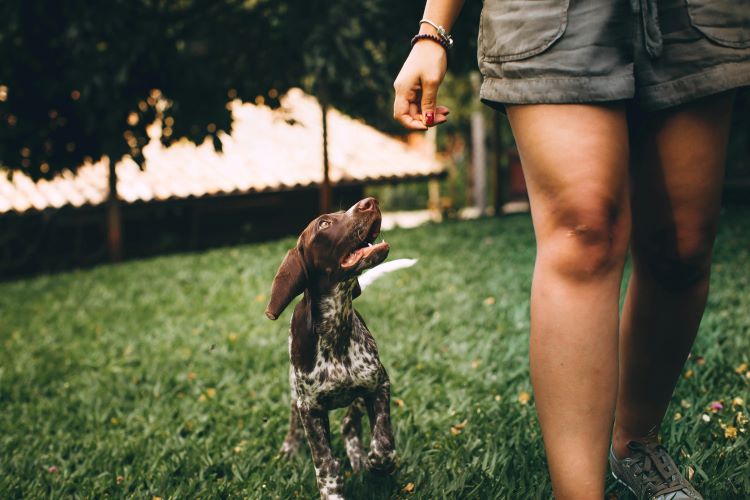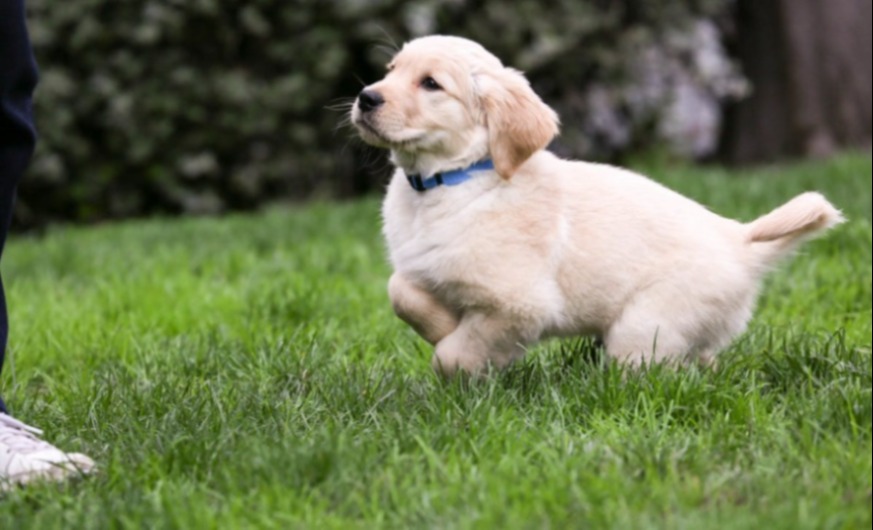Ready to help treat your pet to a healthy life?
5 Necessary Kinds of Puppy Training
By : Kelli Rascoe & Trupanion Staff | Updated May 13, 2025

Puppy training is an essential part of the growth and development of your puppy and helps ease the transition from puppyhood to an adult dog. Think of it as an investment in the future well-being of your dog and the harmony of your relationship with them. It sets the foundation for a positive and fulfilling companionship that lasts throughout their lifetime.
If you're new to puppy training, it can be challenging to know where to start. After all, there are a lot of different types of dog training, not to mention varying opinions on what is and isn't important. Things can get even more muddled when you start looking at different recommendations by dog breed! It's a good idea to consult with your pet's veterinarian early on about puppy training and what's best for their breed type and behavior, but we have your back in the meantime.
To learn what kinds of puppy training is really necessary, we spoke with our in-house experts — specifically our veterinary and breeder teams — at Trupanion (the dog and cat pros behind Pet Parenting). Here's what they agreed are the types of dog training all puppy owners should focus on.
5 kinds of puppy training you shouldn't skip

1. Potty training
Potty training is a necessary part of being a responsible pet owner, and it's for the benefit of humans and dogs alike. Not only do you not want to come home to a mess or live with unpleasant odors around the house, but teaching puppies to save their bathroom needs for outdoors helps instill discipline and control — both of which can help with other forms of canine training. It should also go without saying that training a puppy to relieve themselves in appropriate areas helps maintain a clean and hygienic living environment that's for the best of everyone there.
To help with puppy potty training, be sure to take your pet out several times a day, establishing a routine. Taking them out in the morning after you first get up, after eating, after play sessions, and in the evening before bed are all good ideas. You may also want to consider using puppy pads or "potty pads" during training to help teach your pet to only go in designated areas.
2. Crate training
Crate training involves getting a dog gradually comfortable at going into a crate and staying in there without struggle. There is some differing opinion among pet owners when it comes to dog crates. But while it's true that dogs should not be confined to crates for long periods of time and that using a crate that's too small can cause issues, the reality is that crate training is important for a variety of reasons.
- Comfort — Dogs need a general area that's "theirs" in the home, a place that they always have access to and can snooze in when they like. A crate offers a controlled, stable environment for the dog and should never be used as a place of punishment. Instead, it should be used to help establish daily routines. Use positive reinforcement to help your puppy see the crate as their special place and where they can rest after bursts of activity.
- General training — Once a puppy is crate trained, they may be more susceptible to other forms of training. They'll also be less likely to soil the place they see as theirs, which helps reinforce potty training.
- Safety — When owners are away or unable to supervise their dogs, a crate provides a secure haven, preventing potential household hazards or destructive behavior. It also proves useful during travel, ensuring the dog's safety and comfort.
3. Leash training
You probably are well aware that your new puppy needs to go on regular walks, but it's not enough to just attach a leash to a pup and let them do as they please once out and about. Leash training instills discipline and control, teaching your puppy to walk calmly and follow commands.
This not only ensures a safer and more enjoyable walking experience for both pet and pet owner, but also promotes good behavior in various other settings. Leash training establishes the foundation for effective communication between the puppy and its owner, fostering a bond built on trust and cooperation.
4. Basic commands
While not all dogs will go on to learn advanced verbal commands or excel at agility training, learning basic commands are vital for every pup's wellbeing. Basic commands such as "sit," "stay," and "come" provide a means of effective communication between puppy and pet owner, enhancing the understanding and bond between the two. This establishes a foundation of trust as well as clear understanding of who the pack leader is (you!).
It's also worth noting that basic commands like "leave it" and "down" are important for safety reasons. Puppies who successfully learn these can better avoid danger when you spot it and may be better at navigating social situations. It's not just about obedience — it's about making sure you can communicate with your pet when you need to.
5. Playing nicely
It's easy to see that most puppies enjoy playing with toys and with other pets, but did you know that learning proper playing behavior can be essential for their early development and socialization? Every interaction is a learning opportunity for your puppy, and it's important to monitor them closely.
Practice having your puppy bringing toys to you and letting them go gently rather than making you have to wrestle it out of their mouth. This helps teach control and also keeps both of you safe. While puppies often learn from one another how to place nicely without aggression, it's still vital that you watch your dog with other pets at all times. Teach them not to jump up when first meeting other animals and people, and practice "down" and "leave it" when things start getting too rough at playtime.

Quick tips for successful puppy training
Puppy training is there to establish healthy boundaries, ensure safety, and strengthen your bond with your pet. But no puppy is going to get everything right immediately. Successfully training your puppy is going to take time and repetition, as well as following these tips:
- Start early, right after you bring your puppy home for the first time.
- Use positive reinforcement with pets and treats (but don't overdo it on the treats!)
- Don't get angry with your dog when they don't get something right — training should be a positive experience.
- Practice training every day, incorporating it into your pet's routine.
- Consider enlisting the help of an experienced dog trainer.
- Practice patience!
Talk with your veterinarian about any ongoing difficulties with puppy training, especially when it may concern their health. For example, a puppy that is not seeming to pick up on potty training may need to be evaluated for certain health concerns that may be getting in the way (this is why it's a good idea to sign up for dog insurance if you haven't done so already).
*Trupanion does not receive compensation for any external links or products that are mentioned in this article. Linked products are for informative purposes only.
